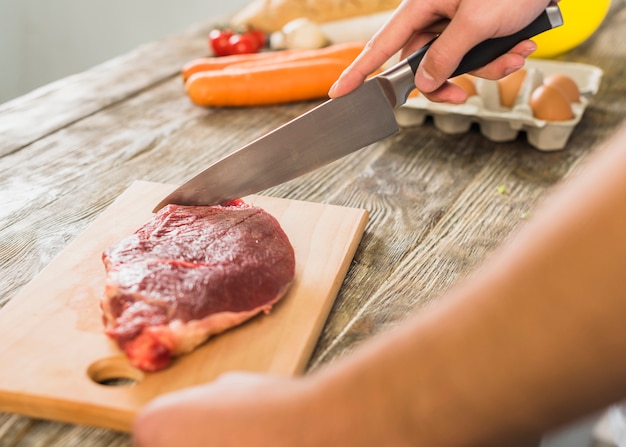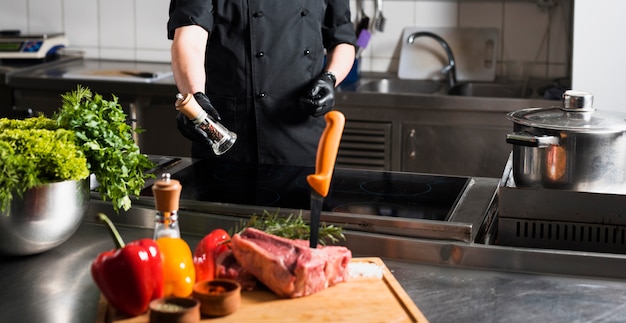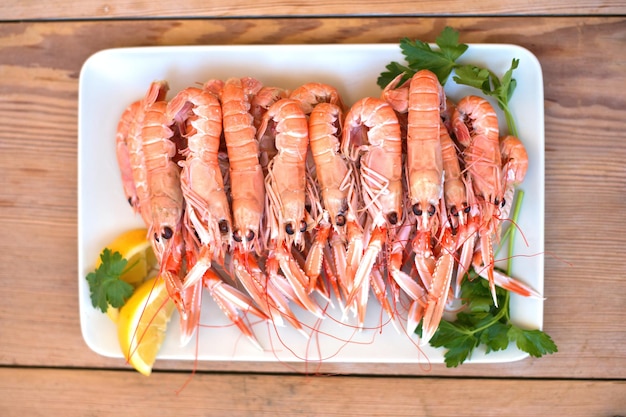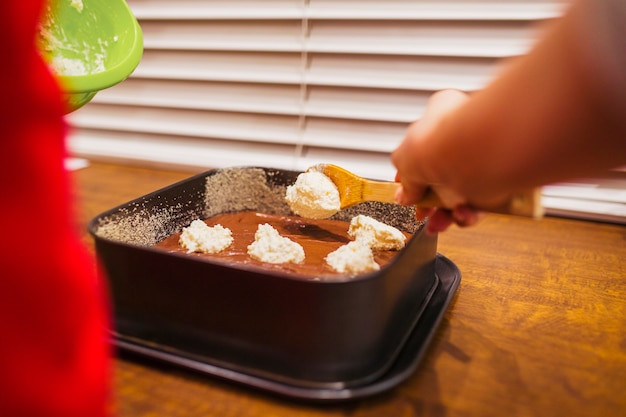Ah, blade steak. A cut often dismissed as tough and chewy, but with a little know-how, it can be transformed into a culinary masterpiece. I've always been a champion of underappreciated cuts, and blade steak is a personal favourite. It's bursting with flavour, incredibly affordable, and with the right approach, it can be just as tender as any fancy steak. Let's get you cooking!
(Part 1) Unveiling the Mystery of the Blade

First things first, let's understand the blade. It comes from the shoulder of the cow, the same region that gives us chuck roast. Think of it as the athlete's muscle - it's worked hard, and the result is a cut packed with flavour thanks to its naturally occurring marbling. But that also means it can be tough if not treated right.
The Science of Tenderness
The muscle fibres in blade steak are like tiny ropes that run in parallel. When you cook them, those ropes tighten and the meat can become tough. But there's a secret weapon: breaking down those fibres! This is where our tenderising techniques come in.
Choosing Your Blade: The Butcher's Guide
When you're at the butcher's, look for a blade steak that's well-marbled, with a good amount of fat running through it. This fat will melt during cooking and infuse the steak with rich, delicious flavour. It should also be a bright red colour, with a good firmness to the touch. Avoid any steaks that have an off-colour or strange smell.
(Part 2) Mastering the Art of Tenderising

So, you've got your blade steak. Now, it's time to transform it into a tender, melt-in-your-mouth experience. There are a few tried-and-true methods that can help you achieve this:
1. The "Hammer" Method: A Forceful Approach
This is a classic, and for good reason. Using a meat mallet, you gently pound the steak to break down the muscle fibres. It's a simple but effective way to make the steak more tender. The key is to use a light touch and not over-pound it. You don't want to turn your steak into a thin pancake!
2. The Salt Brine Technique: A Symphony of Flavour and Tenderness
This is my personal go-to. A simple solution of salt and water (about 1 tablespoon of salt per cup of water) does wonders. You submerge the steak in the brine for a few hours, and the magic happens. The salt draws out moisture, which then gets reabsorbed, making the steak juicier and more tender. It also adds a lovely depth of flavour.
3. The "Slow and Low" Approach: Time is Your Friend
If you've got the time, a slow-cooking method is a fantastic option. It's essentially a relaxing spa day for your steak. Place the blade steak in a slow cooker with some broth or even just water. Cook on low heat for several hours. The gentle heat slowly breaks down those tough muscle fibres, resulting in unbelievably tender meat. It's perfect for those busy days when you want a delicious and effortless meal.
(Part 3) cooking techniques: Unlocking the Blade's Potential

Now, the fun part! We've prepared the steak for its culinary transformation. Let's get cooking. Remember, we're aiming for a perfectly cooked steak with a crispy, flavourful crust, juicy centre, and a tender texture.
1. The Pan-Seared Masterpiece: A Symphony of Sizzle and Flavour
This is my go-to method for blade steak. It's quick, easy, and delivers amazing results.
- Heat it Up: Get your pan scorching hot. A cast-iron skillet or heavy-bottomed pan is ideal. We want that intense heat to create a beautiful crust.
- Oil Up: Add a generous amount of oil, like olive oil, grapeseed oil, or a blend of the two. Let the oil shimmer and heat up before adding the steak.
- Steak Time: Carefully place the steak in the hot pan. Make sure there's enough space for it to cook evenly. If you're cooking multiple steaks, cook them in batches to avoid overcrowding the pan.
- Sealing the Deal: Resist the urge to move the steak for the first 3-4 minutes. Let it sear undisturbed on each side to achieve that gorgeous crust. This seals in the juices and creates a rich flavour.
- Lower the Heat: Reduce the heat to medium and continue cooking for another 3-5 minutes, depending on your desired level of doneness. This allows the steak to cook through without becoming dry.
- Rest and Serve: Remove the steak from the pan and let it rest for 5-10 minutes before slicing and serving. This allows the juices to redistribute throughout the steak, resulting in a juicier, more tender cut.
2. The "Low and Slow" Oven Bake: Even Cooking for a Perfect Crust
This method is perfect for those who prefer a hands-off approach or are working with larger cuts of blade steak.
- Preheat the Oven: Set your oven to 350°F (175°C).
- Seasoning Time: Generously season the steak with salt, pepper, and any other herbs or spices you love.
- roasting time: Place the steak on a baking sheet and roast for 15-20 minutes per inch of thickness.
- Internal Thermometer: For perfect doneness, use a meat thermometer to check the internal temperature. Aim for 135°F (57°C) for medium-rare, 145°F (63°C) for medium, and 160°F (71°C) for medium-well.
- Rest and Enjoy: Remove the steak from the oven and let it rest for 10 minutes before slicing and serving.
3. The Grill Master's Choice: Charred Perfection
Summertime is grilling time, and blade steak is the perfect cut for those outdoor feasts.
- Get the Grill Hot: Fire up your grill, aiming for medium-high heat.
- Steak Preparation: Season your blade steak with salt, pepper, and any other desired spices.
- Grilling Time: Place the steak on the grill and cook for 4-5 minutes per side, or until nicely browned and char-marked.
- Indirect Heat: Move the steak to a cooler part of the grill or to the indirect heat zone, and continue cooking until the desired internal temperature is reached. This helps to cook the steak evenly and prevents it from burning.
- Rest and Serve: Remove the steak from the grill and let it rest for 5-10 minutes before slicing and serving.
(Part 4) Doneness Decoded: A Guide to perfect steak
We've all heard about "rare", "medium-rare", and "well-done", but what does it really mean? Let's dive into the world of doneness and find the perfect level for your taste.
Understanding the Temperatures: A Meat Thermometer's Role
A meat thermometer is your best friend when it comes to achieving perfect doneness. It's the most accurate way to ensure your steak is cooked to your liking. Here's a breakdown of the temperatures for various levels of doneness:
| Doneness Level | Internal Temperature (°F) | Internal Temperature (°C) | Description |
|---|---|---|---|
| Rare | 120-125 | 49-52 | Cool centre, almost raw, with a red-purple colour. For those who enjoy a more "bloody" steak. |
| Medium-Rare | 130-135 | 54-57 | Warm centre, slightly pink, with a more tender texture. A popular choice for steak lovers. |
| Medium | 140-145 | 60-63 | Warm centre, very slightly pink, with a firmer texture. A good choice for those who prefer a more cooked steak. |
| Medium-Well | 150-155 | 65-68 | Hot centre, very little pink, with a firmer texture. A safe choice for those who prefer a well-cooked steak. |
| Well Done | 160-165 | 71-74 | Hot centre, completely brown, with a dry texture. Not recommended for blade steak as it can become tough and dry. |
Doneness Visual Guide: A Guide for the Eye
If you're not using a meat thermometer, you can judge doneness visually:
- Rare: Steak has a cool, red centre, almost raw.
- Medium-Rare: Steak has a warm, red centre, with a slightly firmer texture than rare.
- Medium: Steak has a warm, pink centre, with a firmer texture than medium-rare.
- Medium-Well: Steak has a very slightly pink centre, with a firm texture.
- Well Done: Steak has a completely brown centre, with a dry and firm texture. Not recommended for blade steak.
(Part 5) The Secret Sauce: Flavour Profiles for Blade Steak
Blade steak is incredibly versatile. You can create a symphony of flavours to perfectly complement your taste buds. Here are a few flavour profiles to get you started:
1. The Classic Herb and Spice: A Timeless Choice
This is a simple and delicious option. Use a blend of dried herbs like rosemary, thyme, and oregano, along with a pinch of garlic powder and black pepper. You can also add a touch of salt, but remember that salt helps to draw out moisture, so it's best to season just before cooking.
2. The Mediterranean Delight: A Taste of the Sun
For a bright and sunny flavour profile, mix a blend of dried herbs like oregano, basil, thyme, and marjoram. Add a generous sprinkle of lemon zest, garlic powder, and a touch of red pepper flakes for a hint of heat. This combination is perfect for grilled blade steak.
3. The Smoky BBQ Twist: For the BBQ Enthusiast
For those who love a smoky, bold flavour, try a mix of smoked paprika, chipotle powder, garlic powder, onion powder, and a sprinkle of brown sugar. This blend is perfect for slow-cooking or grilling your blade steak.
4. The Asian Fusion: A Journey to the Orient
For an explosion of Asian flavours, use a blend of soy sauce, ginger, garlic, sesame oil, and a touch of chili flakes. This combination is great for stir-fries or marinades.
5. The Southwestern Zing: A Taste of the Southwest
For a punch of Southwestern flavours, use a mix of cumin, chili powder, paprika, garlic powder, and a touch of cayenne pepper. This blend is great for grilled blade steak or slow-cooked stews.
(Part 6) Mastering the Rest: A Crucial Step
One of the most important steps in cooking blade steak, or any steak for that matter, is resting. It might seem counterintuitive, but resting allows the juices to redistribute throughout the steak, resulting in a more tender, juicy, and flavourful cut.
Why Resting is Essential: The Science of Juiciness
When you cook meat, the juices tend to concentrate in the centre. As the meat cools down, those juices have a chance to redistribute evenly throughout the steak. This is what makes it so delicious.
How to Rest Your Steak: The Simple Technique
After cooking, transfer the steak to a cutting board and cover it loosely with foil. Let it rest for 5-10 minutes before slicing and serving. This simple step makes a world of difference.
(Part 7) Slicing and Serving: The Grand Finale
Your blade steak is cooked to perfection, rested beautifully, and now it's time to slice and serve it with style!
1. The Grain Game: Tender Bites
Slicing against the grain is crucial for achieving tender, manageable bites. The grain refers to the lines that run across the meat. You want to slice perpendicular to those lines to break down the muscle fibres.
2. The Serving Show: A Delicious Centerpiece
Blade steak is a wonderful centerpiece for any meal. Serve it with your favourite sides: roasted vegetables, mashed potatoes, creamy polenta, or a simple salad. It's also delicious in sandwiches or wraps.
3. The Leftover Love: Turning Leftovers into Delights
If you have leftover blade steak, don't let it go to waste! You can use it in a variety of dishes:
- Steak Salad: Slice the leftover steak thinly and toss it in a salad with your favourite vegetables and dressing.
- Steak Tacos: Slice the steak and warm it up in a skillet. Fill tortillas with the steak, your favourite toppings like salsa, guacamole, and sour cream.
- Steak Hash: Chop up the leftover steak and saute it with potatoes, onions, and your favourite vegetables.
- Steak Soup: Add leftover steak to a hearty soup or stew.
(Part 8) FAQs: Your Blade Steak Questions Answered
Now, let's tackle those common questions about blade steak:
1. How do I know if my blade steak is safe to eat?
The USDA recommends an internal temperature of 145°F (63°C) for medium-rare to ensure the steak is safe to eat. Use a meat thermometer to check the internal temperature.
2. Can I use a marinade for blade steak?
Absolutely! Marinades are a fantastic way to add flavour and tenderise the steak. Use a marinade of your choice, making sure to let the steak marinate for at least 30 minutes, ideally overnight.
3. What's the best way to store leftover blade steak?
Store leftover blade steak in an airtight container in the refrigerator for up to 3-4 days. You can also freeze it for up to 2-3 months. To freeze, wrap the steak tightly in plastic wrap and then place it in a freezer-safe bag.
4. Can I use blade steak for other dishes?
Yes, absolutely! Blade steak is versatile and can be used in stir-fries, stews, and soups. Just remember to tenderise it properly before using it in these dishes.
5. What are some great pairings for blade steak?
Blade steak pairs well with bold, robust wines like Cabernet Sauvignon, Merlot, or Shiraz. You can also pair it with lighter wines like Pinot Noir or Zinfandel, or even a crisp beer.
So, there you have it! My ultimate guide to cooking blade steak to perfection. Now go forth and impress your friends and family with this delicious and affordable cut of meat!
Everyone is watching

How to Cook Frozen Lobster Tails Perfectly: A Step-by-Step Guide
RecipesLobster. Just the word conjures up images of lavish meals, special occasions, and a taste of luxury. But let's...

Pork Fillet Cooking Time: How Long to Cook It Perfectly
RecipesPork fillet, or tenderloin as it's sometimes called, is a real favourite in our house. It's so versatile, and...

Pigs in a Blanket Cooking Time: How Long to Bake for Perfect Results
RecipesAh, pigs in a blanket. Just the name conjures up images of those delightful little parcels of crispy pastry en...

The Ultimate Guide to Cooking Delicious Frankfurters
RecipesLet's face it, we all love a good frankfurter. It's a classic, simple, and always satisfying. But let's be rea...

Wolf Meat Recipes: A Guide to Cooking Wild Game
RecipesLet's be honest, you don't see wolf meat at your local butcher shop every day. It's a bit of a wild card, but ...
